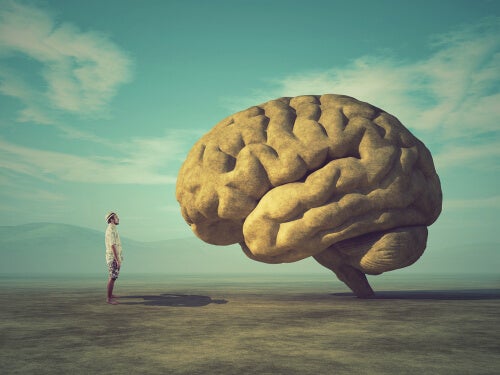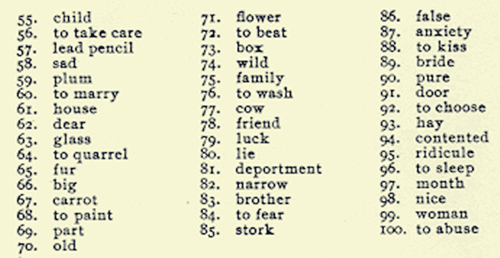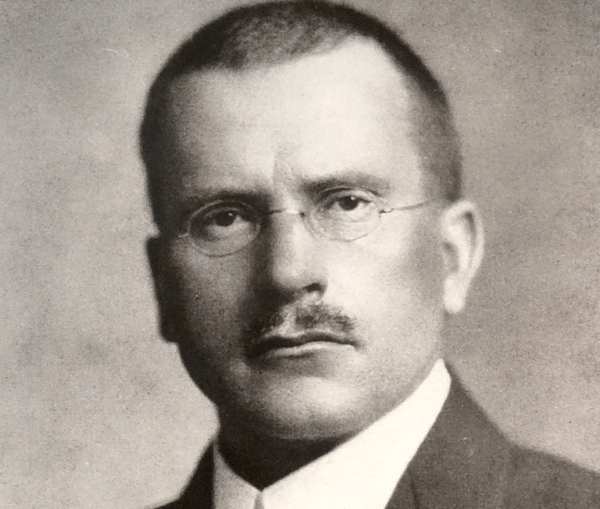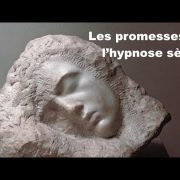The Jung word association test is one of the most interesting psychological tests. It’s based on the idea that our unconscious is capable, at times, of assuming control of our conscious will. In this way, a word can trigger the evocation of past traumas or give rise to the visibility of an unresolved internal conflict.
This instrument was widely accepted as valid for several decades and was applied in multiple contexts. However, it should be noted that it’s a projective test. Therefore, used on its own, it isn’t diagnostically reliable. In fact, it should be used in conjunction with other resources, tests, and interviews in order that clearer and more accurate conclusions may be reached.
Jung created the word association test in the middle of the 20th century. His objective was to unravel the unconscious. He wanted to understand its manifestations and be able to read it, understand it, and ultimately bring to light the problems that vetoed a patient’s freedom and well-being.
The technique couldn’t be easier. The person is presented with a stimulus word to which they must respond with the first term that comes to mind. It’s understood that these stimulus concepts usually awaken a specific emotional response in them.
The therapist must read out the words, then interpret the physical and emotional responses of the patient after the test. There are 100 words on the list. Interestingly, despite the fact that this test is more than a century old, neuroscience today has found evidence that supports its premises.
The Jung word association test: objectives, characteristics, and application
At first glance, it may seem like little more than a game. One person says a word and the other responds with the first thing that comes to mind. However, it’s not only the word that’s addressed. In fact, the patient’s physiological reaction must also be interpreted. Thus, Jung’s Word Association Test is based on a broad theoretical fabric that’s well worth knowing about.
The conscious mind and sensitive spots
Early in his career, Carl Gustav Jung worked at the Burgh ö lzli psychiatric clinic at the University of Zurich under the direction of Eugen Bleuler. Jung was the key figure in establishing many of the concepts that we use today in the field of clinical psychology and psychiatry.
He began to study the processes that accompany trauma and complexes. According to him, one way of understanding and bringing them to light was through dreams, active imagination, or fantasy. In his day-to-day work with patients, he realized that certain words and expressions acted as stimulating impulses from the unconscious.
One way of promoting this activation, of making contact with the psychic universe of trauma, fear, and conflict was through the evocation of a set of keywords. To test this theory, Jung devised the Word Association Test (WAT).

Application
Jung made it clear that this test isn’t useful for everyone. For example, there’ll be those who present excessive resistance, those who don’t take it seriously, and those who don’t possess adequate language skills. This could be due to age, understanding, or other neurological problems or developmental deficits, etc.
- The test involves presenting the patient with 100 stimulus words.
- Before each word, the patient must say out loud the first thing that comes to mind quickly and automatically.
- The therapist writes down the evoked term and must also be attentive to other factors. For instance, response time, discomfort, facial expressions, posture, silence, and whether they had to repeat the stimulus word, etc.
The reliability of Jung’s word association test
Carl Jung realized that this instrument was extremely suitable for use in family groups. Similar response patterns could thus be observed, thereby identifying the origin of multiple problems.
However, Jung eventually abandoned this instrument along with his interest in the experimental field of psychiatry. Later he developed his theories about archetypes and the collective unconscious. However, this test continued to be applied until 2005. Then, its use fell dramatically. Nowadays, it’s only used in Jungian therapy programs and as a complementary projective technique in some therapeutic processes.

In 2013, Dr. Leon Petchkowsky conducted an interesting study on this subject. He demonstrated through magnetic resonance imaging how the words of the Jung test generated really revealing neurological responses in people. As a matter of fact, with words like father, family, abuse, fear, child, etc, mirror neurons were activated.
There was also activity in areas of the brain such as the amygdala, insula, hippocampus, etc. Furthermore, the results were extremely striking in people with post-traumatic stress disorder. This goes to show us how words evoke emotions, memories, and certain fragments that we often choose to ignore. Therefore, despite the fact that Jung’s word association test continues to receive criticism, it remains an interesting resource. In addition, its use is supported by several recent studies.
The post The Jung Word Association Test appeared first on Exploring your mind.



















Comments